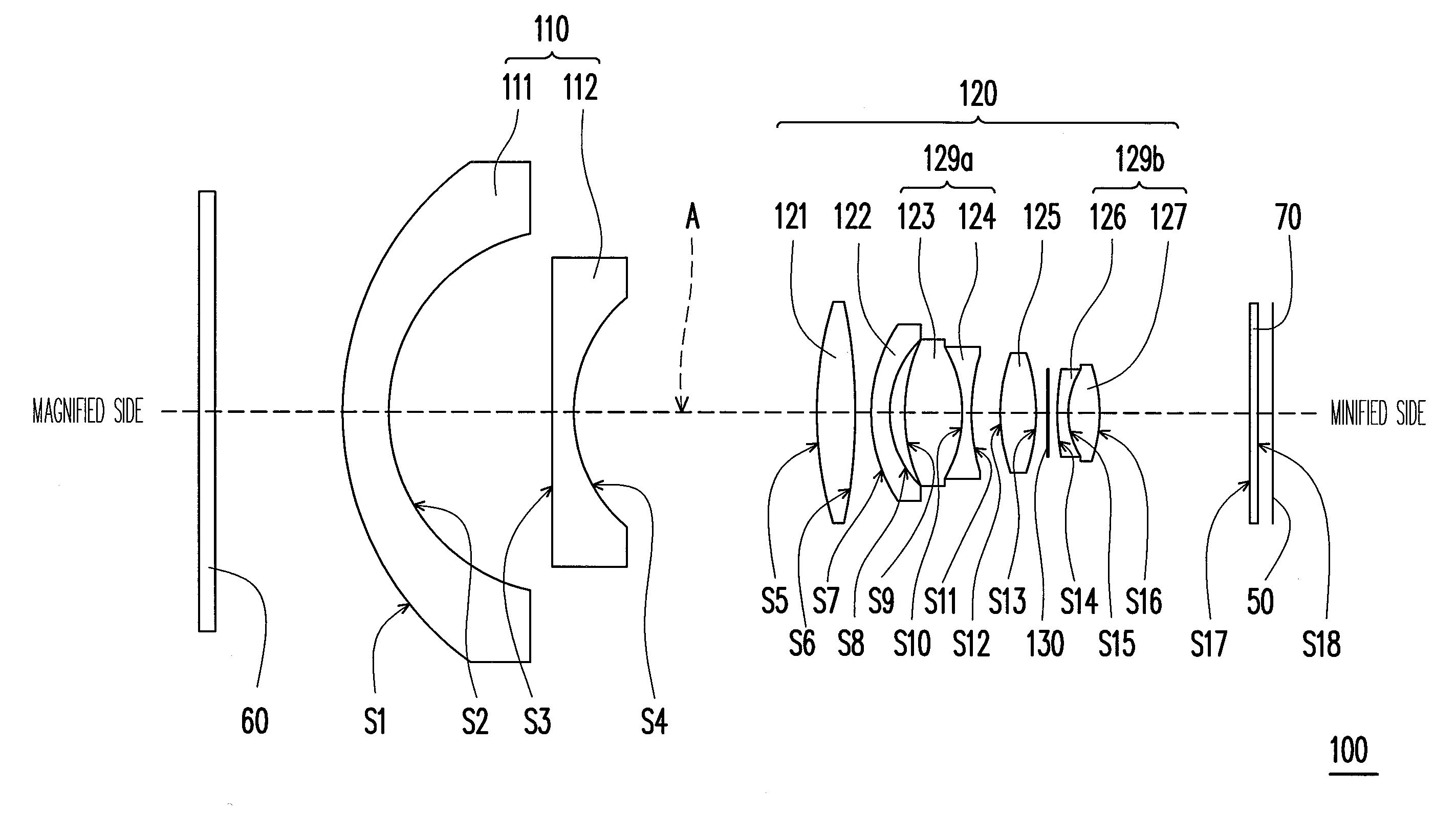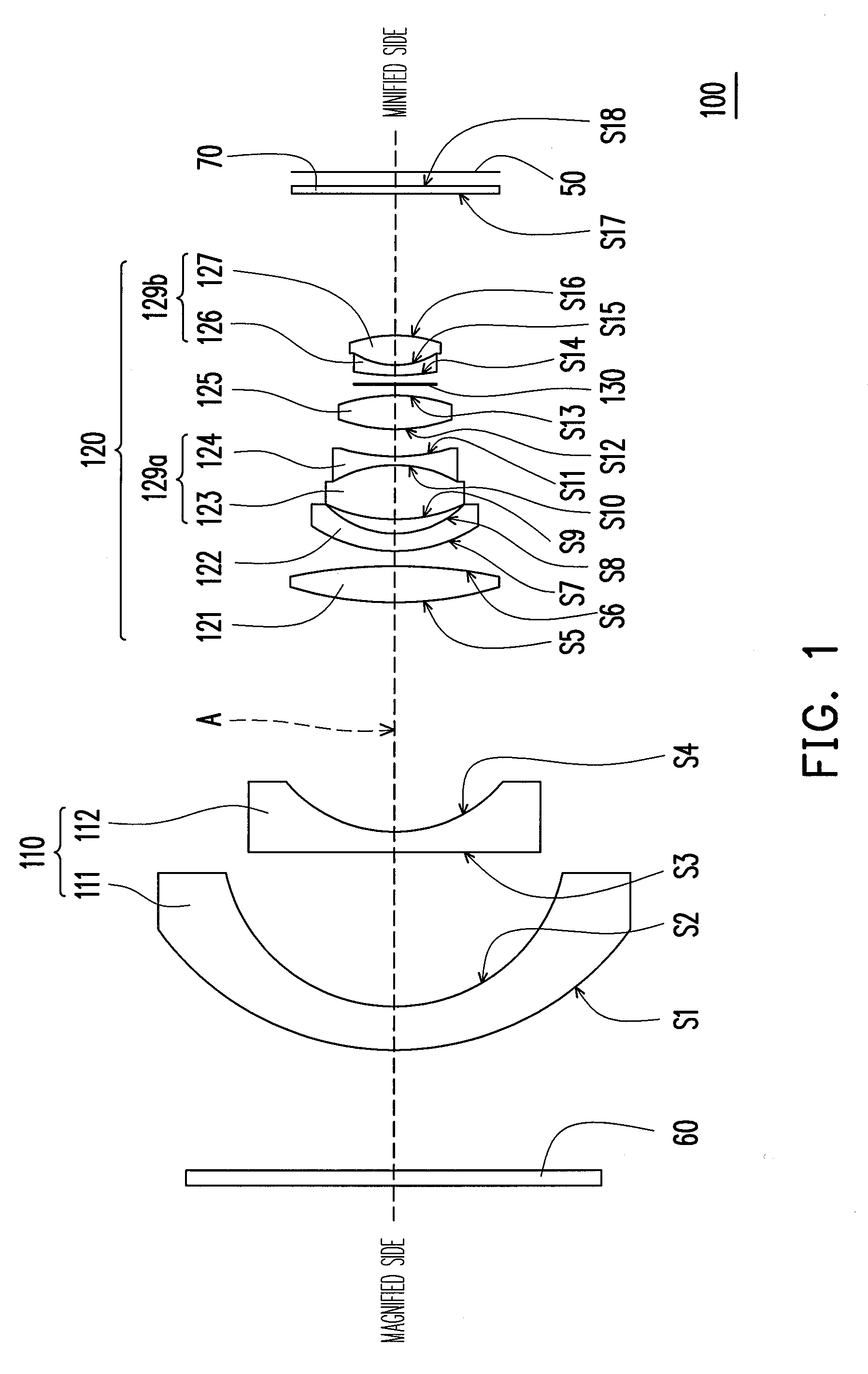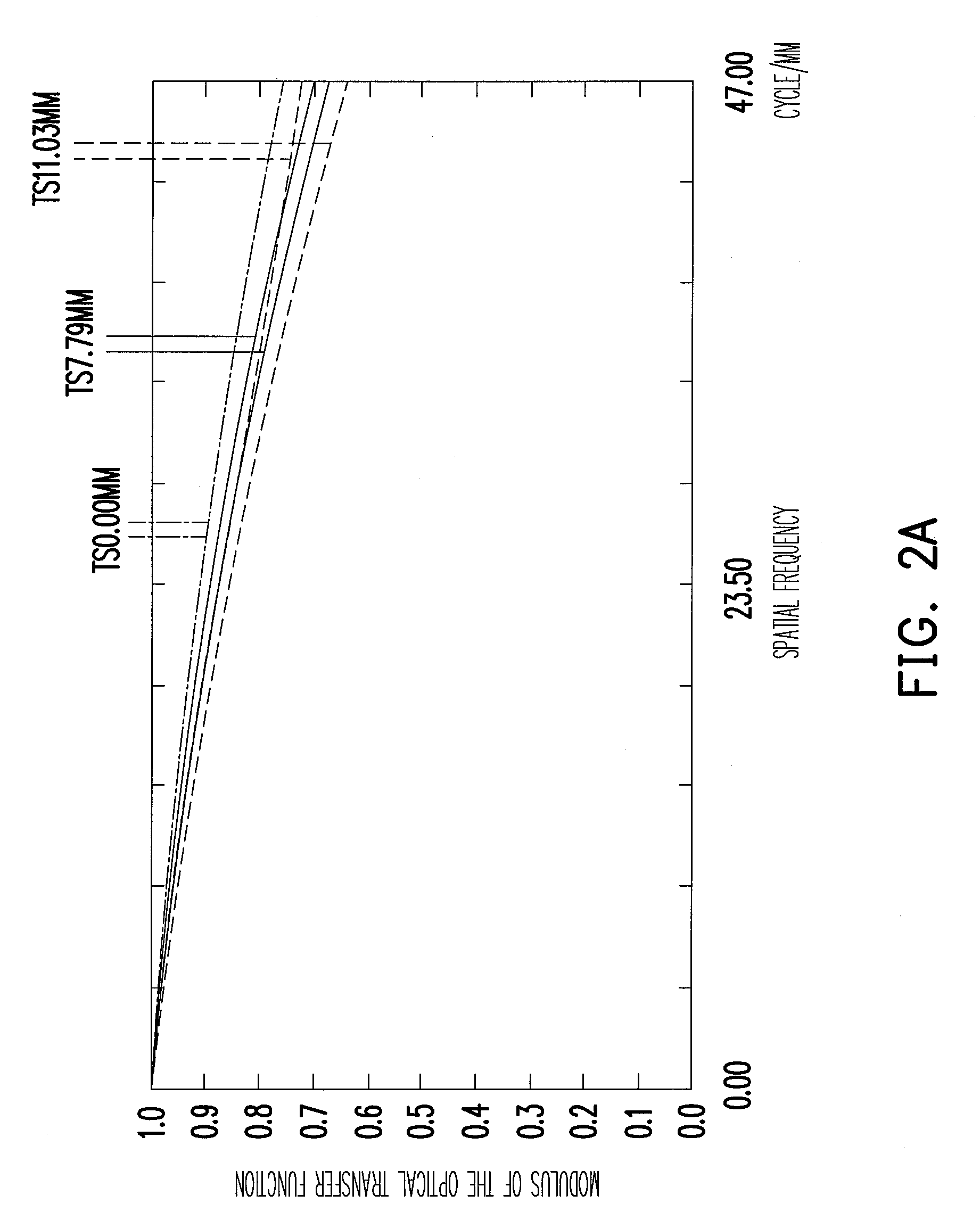Fixed-focus lens
a fixed-focus lens and lens body technology, applied in the field of lenses, can solve the problems of higher manufacturing difficulty, higher cost and production difficulty of aspheric lenses, and difficult assembly of lenses, so as to reduce the cost of optical components, reduce the cost of lenses and the volume of fixed-focus lenses, and good imaging quality
- Summary
- Abstract
- Description
- Claims
- Application Information
AI Technical Summary
Benefits of technology
Problems solved by technology
Method used
Image
Examples
first embodiment
The First Embodiment
[0022]Referring to FIG. 1, a fixed-focus lens 100 of the embodiment includes a first lens group 110 and a second lens group 120. The first lens group 110 is disposed between a magnified side and a reduced side and includes a first lens 111 and a second lens 112 arranged in sequence from the magnified side to the reduced side. The refractive powers of both the first lens 111 and the second lens 112 are negative, the first lens 111 is an aspheric lens and the second lens 112 is a spherical lens. In the embodiment, the first lens 111 is, for example, a convex-concave lens with a convex surface facing the magnified side, and the second lens 112 is, for example, a plane-concave lens with a plane surface facing the magnified side.
[0023]The second lens group 120 is disposed between the first lens group 110 and the reduced side and includes a third lens 121, a fourth lens 122, a fifth lens 123, a sixth lens 124, a seventh lens 125, an eighth lens 126, and a ninth lens 12...
second embodiment
The Second Embodiment
[0037]Referring to FIG. 3, the fixed-focus lens 100′ of the embodiment is similar to the fixed-focus lens 100 in the first embodiment (as shown by FIG. 1), and the differences between them are as follows. In this embodiment, the first lens group 110′ of the fixed-focus lens 100′ further includes a tenth lens 113 disposed between the second lens 112′ and the third lens 121. The second lens group 120′ further includes an eleventh lens 128 disposed between the third lens 121 and the fourth lens 122. The refractive powers of the tenth lens 113 and the eleventh lens 128 are, for example, respectively negative and positive, and the tenth lens 113 and the eleventh lens 128 are both spherical lenses. In the embodiment, the relative position between the third lens 121 and the eleventh lens 128 is unchanged, and the third lens 121 and the eleventh lens 128 are capable of moving relatively to the fixed-focus lens 100′ for focusing. In the embodiment, the second lens 112′ i...
third embodiment
The Third Embodiment
[0043]Referring to FIG. 4, the fixed-focus lens 100″ of the embodiment is similar to the fixed-focus lens 100 in the first embodiment (as shown by FIG. 1), and the differences between them are as follows. In this embodiment, the first lens group 110″ of the fixed-focus lens 100″ further includes a tenth lens 113′ disposed between the second lens 112″ and the third lens 121. The second lens group 120″ further includes an eleventh lens 128′ disposed between the third lens 121 and the fourth lens 122. The refractive powers of the tenth lens 113′ and the eleventh lens 128′ are, for example, respectively negative and positive, and the tenth lens 113′ and the eleventh lens 128′ are both spherical lenses. In this embodiment, the positions of the first lens group 110″, the fifth lens 123, the sixth lens 124, the seventh lens 125, the eighth lens 126 and the ninth lens 127 relative to the fixed-focus lens 100″ remain unchanged, the relative positions between the third len...
PUM
 Login to View More
Login to View More Abstract
Description
Claims
Application Information
 Login to View More
Login to View More - R&D
- Intellectual Property
- Life Sciences
- Materials
- Tech Scout
- Unparalleled Data Quality
- Higher Quality Content
- 60% Fewer Hallucinations
Browse by: Latest US Patents, China's latest patents, Technical Efficacy Thesaurus, Application Domain, Technology Topic, Popular Technical Reports.
© 2025 PatSnap. All rights reserved.Legal|Privacy policy|Modern Slavery Act Transparency Statement|Sitemap|About US| Contact US: help@patsnap.com



